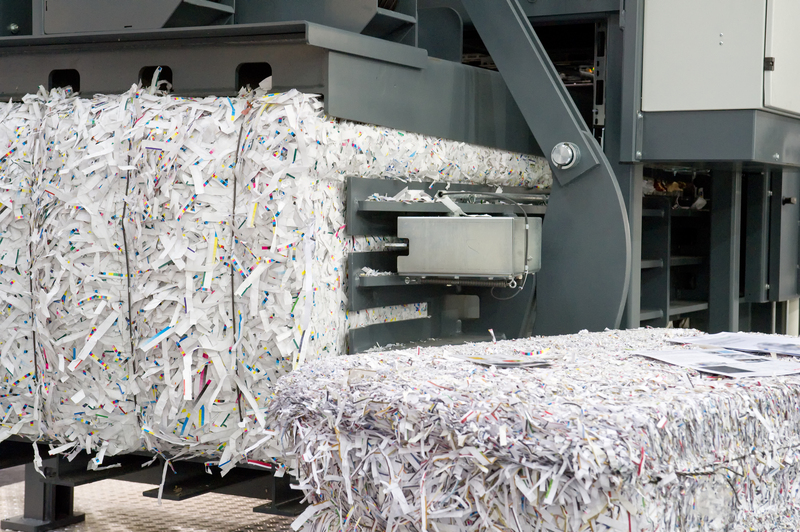Getting Organized: The Ultimate Step-by-Step Plan for Office Clearance
Posted on 05/07/2024
Are you tired of working in a cluttered and disorganized office? Do you find yourself spending more time looking for things than actually being productive? If so, it may be time for an office clearance. Clearing out your workspace and getting organized can have a significant impact on your productivity, efficiency, and overall well-being. In this article, we will provide you with the ultimate step-by-step plan for office clearance. So put on your organizing hat and get ready to transform your office into a streamlined and functional space.
Step 1: Assess Your Needs
The first step in any successful office clearance is to assess your needs. Take a good look around your office and identify the areas that need the most attention. Is your desk overflowing with papers and supplies? Are your shelves cluttered with unnecessary items? Make a list of all the areas that require decluttering and organization.

Step 2: Declutter and Sort
With your list in hand, it's time to start decluttering. Begin by going through each item in your workspace and deciding whether it's necessary or not. If you haven't used something in over a year, chances are you don't need it. Create three piles - keep, donate/sell, and trash - and sort all items accordingly. This will help you eliminate any unnecessary items from your office.
Step 3: Categorize
Once you've decluttered, it's time to categorize the items that are left. This makes it easier to find what you're looking for when you need it. For instance, designate one area for office supplies, another for important documents, and another for personal items such as photos or decorations.
Step 4: Create Storage Solutions
Now that everything is categorized, it's time to find suitable storage solutions for each category. This could include file cabinets, shelves, bins, or drawer organizers. Be sure to label each storage container to make it easier to find what you need. You can also use color-coded labels for added organization and efficiency.
Step 5: Optimize Your Desk Space
Your desk is where you spend most of your time, so it's essential to keep it tidy and organized. Invest in a desk organizer to keep your pens, pencils, paper clips, and other office supplies within reach. Utilize drawers or shelves for storing important papers and documents. Having a clutter-free desk will help improve your focus and productivity.

Step 6: Digital Decluttering
In this digital age, we often forget about decluttering our virtual space. Take the time to organize your computer files and emails. Delete any unnecessary files and create folders to store important documents. This will not only save you time but also make it easier to find what you're looking for when needed.
Step 7: Maintenance Is Key
Maintaining an organized office is as crucial as getting organized in the first place. Make a habit of decluttering and organizing at least once a week. Spend a few minutes each day tidying up your workspace to avoid piles from building up again. This will ensure that you maintain a productive and stress-free work environment.
The Pros:
1. Increased Productivity: A well-organized office makes it easier to find what you need, reducing the time spent searching for items. This leads to increased productivity and efficiency.
2. Improved Focus: A cluttered workspace can be distracting, making it challenging to concentrate on tasks at hand. An organized office can help clear your mind and allow you to focus better on your work.
3. Stress Relief: Clutter can cause stress and anxiety, making it difficult to work efficiently. A clean and organized office can reduce stress levels and promote a sense of calmness.
The Cons:
1. Time-Consuming: Organizing an entire office can be a time-consuming process, especially if you've let things pile up for a while. However, the time spent organizing upfront will save you time in the long run.
2. Cost: Depending on your storage needs, organizing your office may require purchasing certain organizational tools such as file cabinets or shelves. While this can be an added cost, it is an investment in creating a functional and efficient workspace.
Tips:
1. Start Small: If the thought of organizing your entire office seems overwhelming, start with one area at a time. This will make the process more manageable and less daunting.
2. Go Paperless: Consider implementing digital filing systems to reduce paper clutter. This will not only help save space but also streamline your document management.
3. Declutter Regularly: Make it a habit to declutter and organize your office frequently to avoid build-up and maintain an organized space.
Takeaways:
1. A well-organized office can lead to increased productivity, improved focus, and reduced stress levels.
2. Decluttering, categorizing, and creating storage solutions are essential steps in achieving an organized workspace.
3. Maintaining organization is key to reaping the benefits of an organized office.
Conclusion:
Office clearance and organization may seem like a daunting task, but the rewards are worth it. By following this step-by-step plan and incorporating our tips, you can transform your office into a streamlined and efficient space that promotes productivity and reduces stress levels. Remember to regularly declutter and maintain your organized workspace for long-term success. Here's to a clutter-free and productive work environment!

